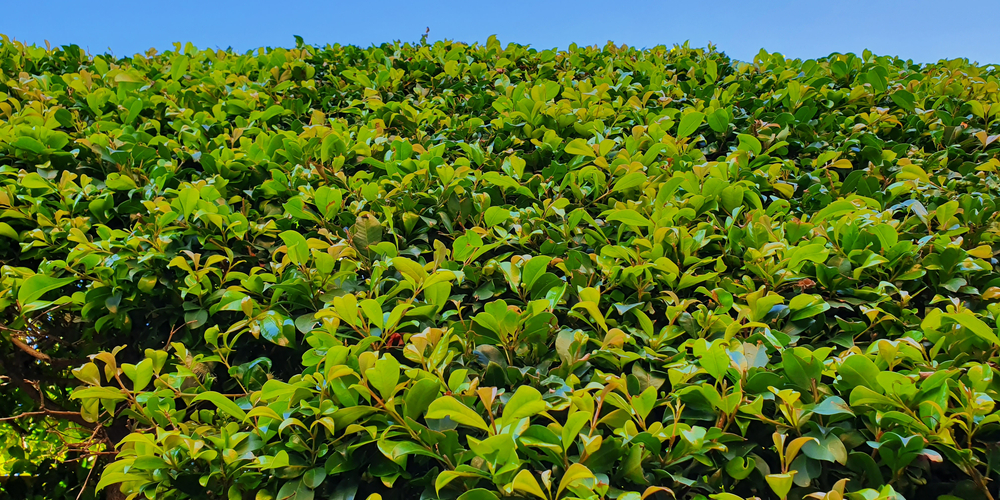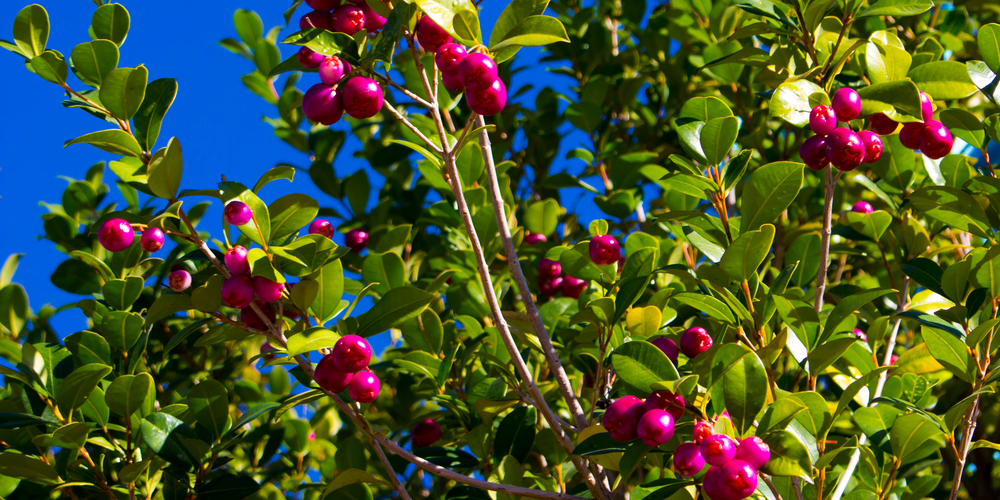If you are looking for a bushy hedge for increased privacy at home, Lilly Pilly might be your best choice. Not only do they work as barriers, but they are also stunning and lush plants that can add some character to your garden, thanks to the contrast in foliage color that ranges from deep red to pink. Let’s look at Lilly Pilly Growth and Care.
What is Lilly Pilly?

Native to the Australian climate, Lilly Pilly can thrive under various conditions but do best in regions that receive plenty of sunlight. If you can’t provide them with that, don’t worry. You can grow them in pots or plant them in your garden. With the appropriate care, these plants will adapt to a wide variety of conditions. In general, the more sun, water, and nutrients these plants will receive, the faster their growth.
Contrary to most hedge plants, which feature dense foliage uniform in color, one of the most attractive characteristics of Lilly Pillies is the contrasting shades that emerge as the plants mature. Plus, if you have other plants in your garden, Lilly Pilly can help attract beneficial pollinators to ensure the healthy growth of your yard.
While these plants are easy to care for and relatively low-maintenance, you may want to learn all there is to know about the Lilly Pilly growth and care before getting one for your garden. To get the most out of this stunning bush, make sure you keep reading this essential guide.
Lilly Pilly Growth and Care: How to care for the plant

Caring for Lilly Pillies is not hard. If you can’t provide them with full sun, don’t worry: they will grow well even in light shade, as long as you meet all of their other needs. Pay careful attention to the planting process: following a couple of steps can make the difference in making your plant thrive in your garden. In the next section, you’ll find all the information you’ll need for mastering the Lilly Pilly Growth and Care.
Sunlight
Ideally, it would be best to plant or place Lilly Pillies under direct sun or partial shade with protection from strong winds and harsh temperatures. While these plants are though once established, you will need to shelter them during the hardening process.
Watering
One of the best parts of planting Lilly Pillies is that they don’t require much maintenance. With watering, what counts is consistency. Ensure the soil is damp and water lightly once per week.
In the warmer months, mulching will be essential to maintain moisture.
Pruning
This plant requires regular pruning to maintain the attractive shape and density that make it such a popular hedge plant. During its first months of life, prune its tips regularly to encourage dense foliage: do not fall into the trap of letting your hedge grow up to the height you desire, thinking it will fill out later.
Once the plant has hardened up, the frequency of pruning will depend on the climate. The rule of thumb is to prune after the growth phase (at least once per year). However, don’t despair if you notice your plant has become too bushy: Lilly Pillies can sustain hard pruning too.
In cooler regions, you will have to prune less regularly. Indeed, growth tends to be slower.
Humidity
These plants are not particularly picky when it comes to humidity. If you provide them with enough water and give them the ideal soil conditions they need, they will tolerate droughts and heavy rain.
However, you’ll have to be careful with pests. Too much humidity can attract psyllid and aphids that can ruin your plant’s appearance and cause severe damage to its development.
USDA Outdoor Growth Climate Zones
Lilly Pillies do best in subtropical and Mediterranean climates. While they tolerate light frost, they do best in warm temperatures, especially in USDA hardiness zones between nine to eleven. Plant them in the early spring or late winter to give them enough time to adapt to your garden’s conditions before exposure to all the outdoor elements.
Fertilizer
Fertilizing Lilly Pillies is not mandatory but can help you maximize their growth, especially for young plants. Consider applying compost or an organic fertilizer in spring, summer, and autumn. If you live in an area with mild winters, you may apply fertilizer in this season too. Add a mixture low in phosphate to mature plants in spring and autumn to keep them in top conditions.
Soil Type
You must dig a deep hole and fill it with sandy soil to allow Lilly Pilly’s roots to spread and grow effectively. However, these plants do well also in clay loam or saline soil. Just remember to provide them with enough space for growing. Lilly Pillies can be invasive, especially if they like their environment. The good news is that they can grow well in pots too: if you don’t have much space in your garden, this might be a better option.
Don’t forget to add some organic compost or manure to increase the soil’s nutrient content. Mulching will help maintain moisture and keep weeds under control.
Lilly Pilly Growth and Care: Propagation
In general, it is easy to grow seeds from Lilli Pillies. However, they are slow to germinate. The best propagation method is from cuttings. Take a four inches new growth and dip the end in root hormone. Keep the soil moist and warm, preferably in a humid location. For best results, ensure each cutting gets an individual pot.
Alternatively, you can propagate this plant by collecting fresh and ripe fruits and taking seeds out. Plant them in individual pots or somewhere in your garden with humid and moist soil. However, keep in mind that not all varieties of this plant bear fruit. Plus, growing Lilly Pillies from seeds is a low process that may not give the results you expect.
Lilly Pilly Growth and Care: The Bottom Line
As you may notice, growing Lilly Pilly is not a big deal. You’ll want to ensure you are consistent with care and that you provide your plants with enough nutrients to survive. Aside from that, you can expect your Lilly Pillies to adapt to your garden’s environment quickly and to act as a stunning hedge plant or decorative addition to your yard.
